LG G2 - Impressions
Hello! Not so long ago, I managed to “cuddle” the LG G2. The smartphone is very interesting, and in Habré we have already written about it. Nevertheless, there is a general impression, and pleasant things that I want to talk about. Yes, and the buttons on the back still nobody did, it turned out really cool. :)
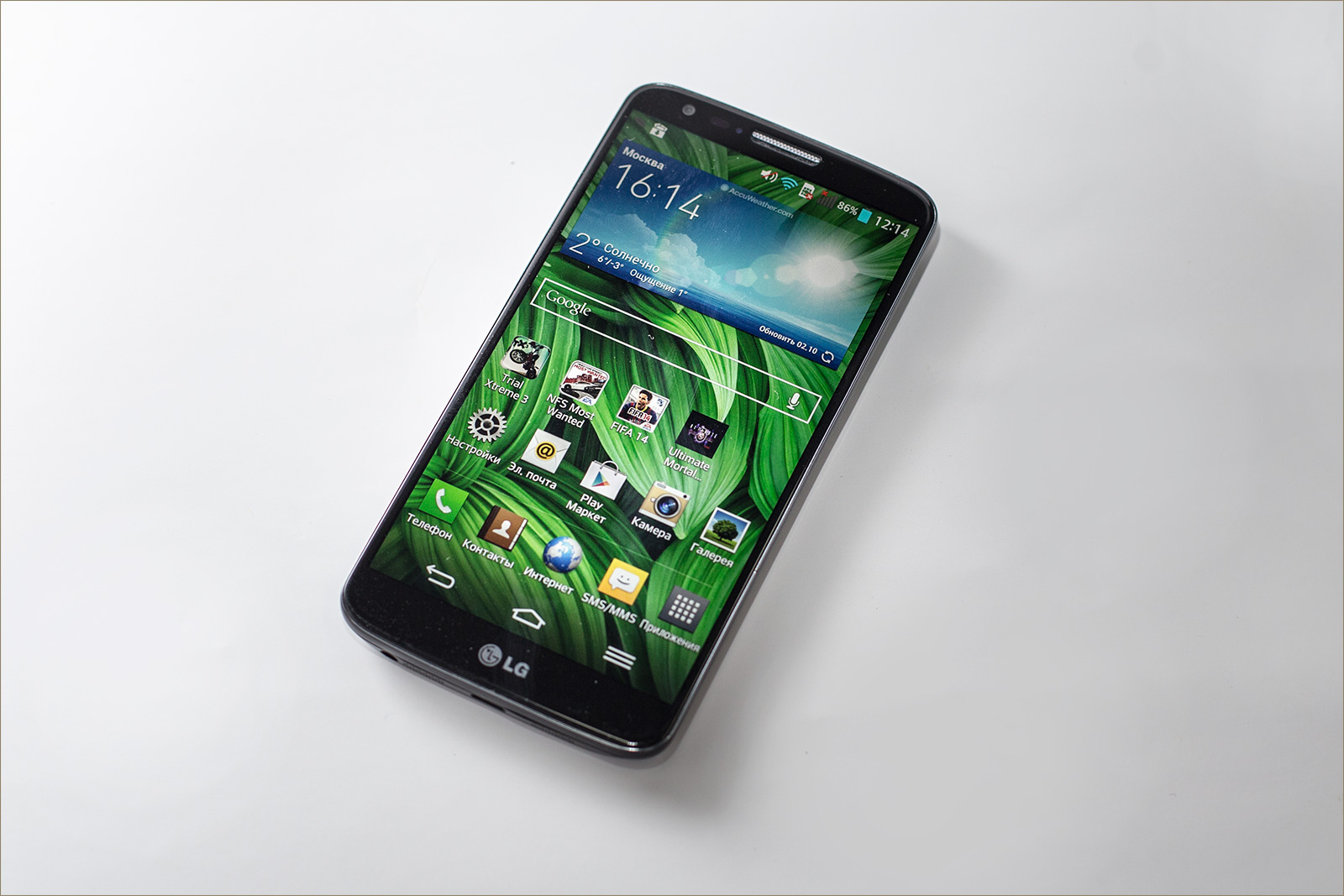
The insides of the smartphone are state-of-the-art: a processor based on the 800th QualCom, Adreno 330 video core, all current wireless interfaces, in general - like in the best homes.

')
The Galaxy S4 and the power less, besides the version based on Qualcomm Snapdragon 800 only planned to release, but to the finished copies, like, it never came. The most interesting thing in the new product is definitely not a processor with memory: LG promised a new screen, a new camera and improved software, and it was these questions that interested me first of all. Responsible for autonomy battery volume in a decent 3000 mAh.

Built-in memory - 32 GB, when asked about versions with a large amount of internal memory, I was answered negatively. Oh, I almost forgot: the smartphone uses a new feature that came from the world of large PCs: dedicated memory for graphics, it works, however, a little differently. GPU Adreno 330 can address not only the “common” RAM, but also has its own fast and energy-efficient “buffer”, thereby reducing power consumption when displaying “static” information - until the frame changes - the smartphone will not recalculate it, but will stupidly from the video clip. LG tests have shown that there is an increase in autonomy and it is palpable. In practice, comparing the device with the included feature and without it will not work at all, so it remains to take their word for it.
In G2, the matrix is set with a huge diagonal: 5 point and 2 tenths of an inch. But a couple of years ago, everyone laughed at devices with 4.7-inch screens, they say, you can dig. The screen is good for two reasons: first, FullHD reigns supreme on these five inches with a penny. And secondly ... LG engineers managed to shove this gigantic screen into a case that does NOT exceed the usual 4.7 - 5-inch devices with their case sizes. Magically. Or rather, there is no magic here, the buttons under the screen and the buttons on the sides of the smartphone are sacrificed, but with all these sacrifices, the smartphone has only become better.

On-screen management has long been honed by Google on its flagships. Need buttons - here they are, not needed - hide. In this regard, LG went a little further, allowing you to choose the color of the status bar, and slightly vary the controls on it, but more on that later.
With the side edges of the smartphone is a little more complicated. The control buttons are transferred to the rear panel, and I would call this solution ingenious. Locking and volume control are now equally convenient and accessible to both right-handers and left-handers. You take the smartphone, and the index finger rests on the controls.
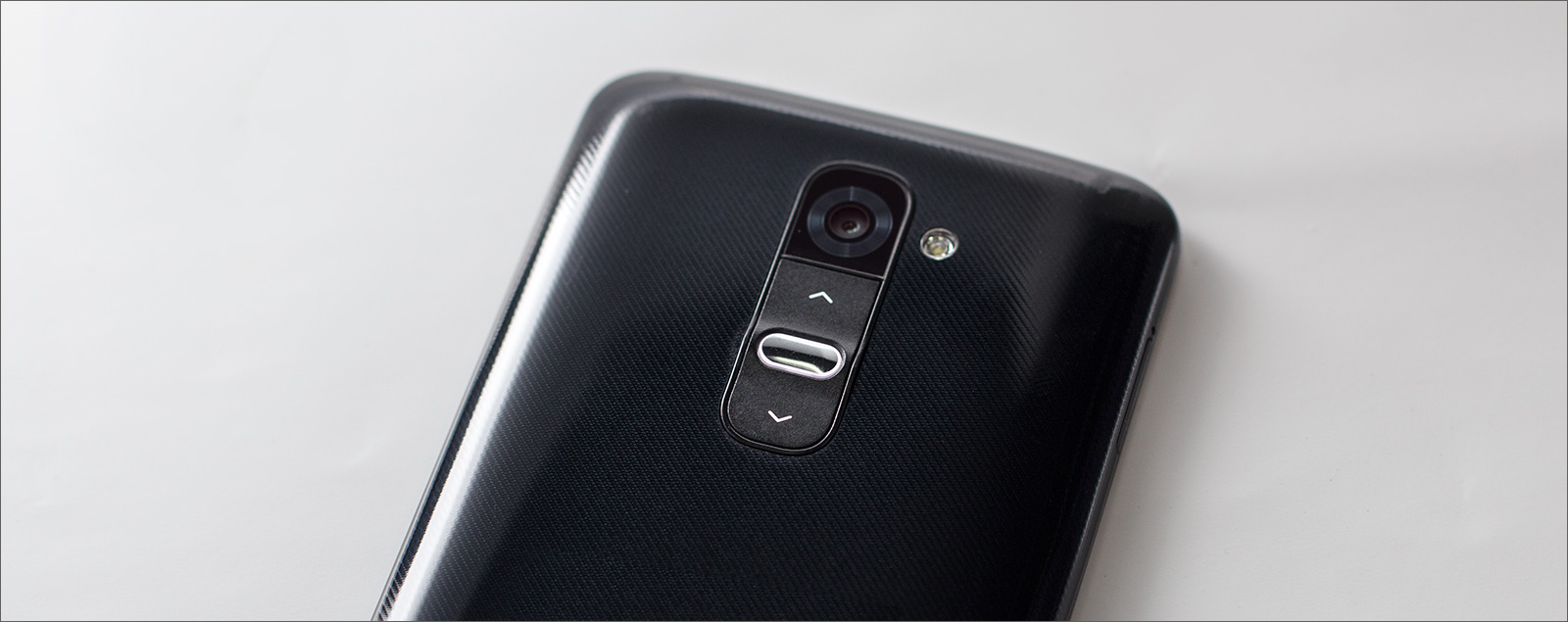
It is very difficult to drop the device with this grip, even if you get your phone out of your pocket on the go and try to unlock it at the same time. There is no need to intercept for changing the volume, locking the screen or any other actions with hardware keys. Okay, back to the screen.
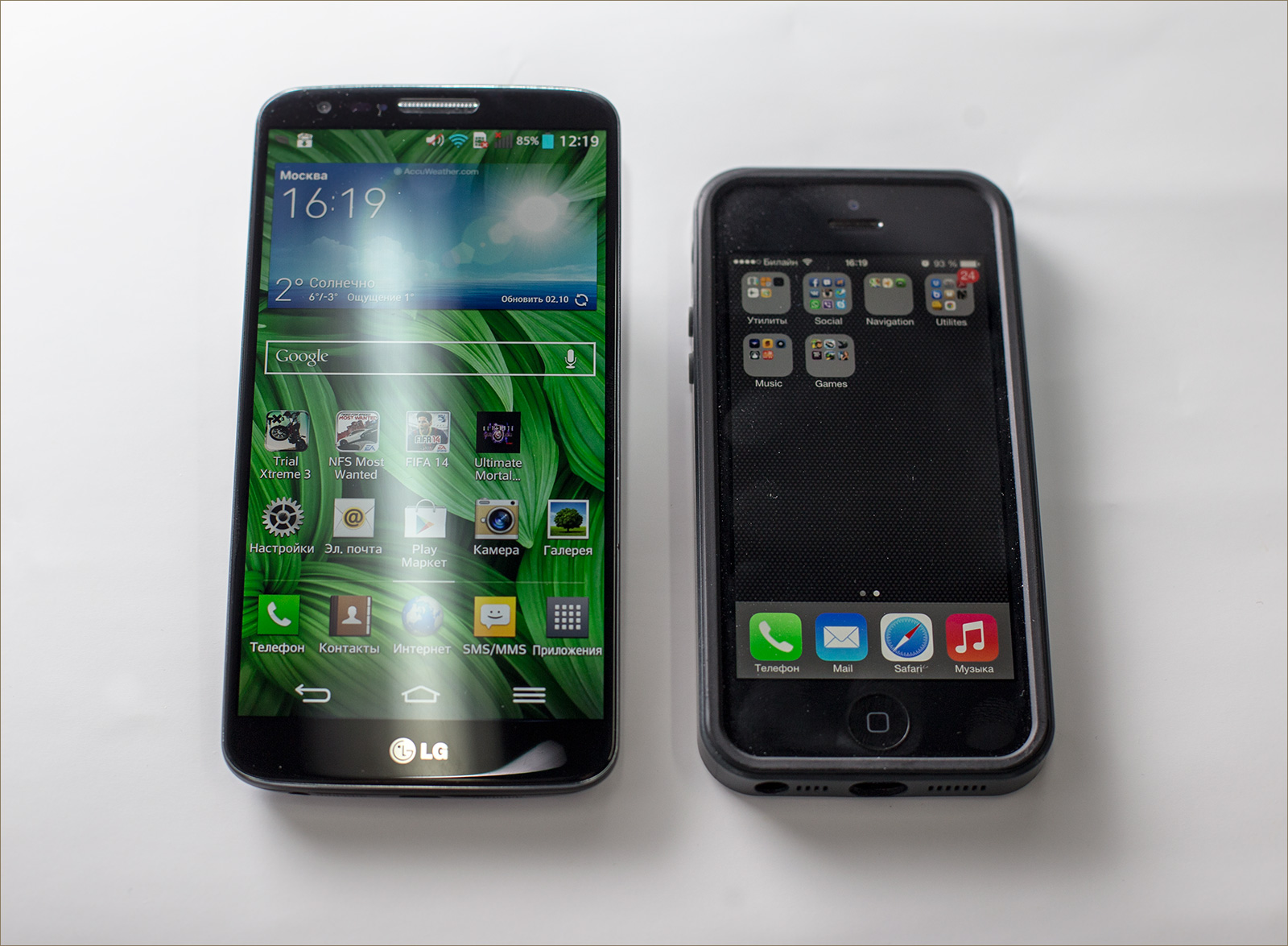
Display - FullHD, IPS matrix with the corresponding viewing angles and color reproduction. Adobe RGB should not be expected, of course, but there is no need for it, and almost full sRGB coverage is stated out of the box. Image density - 424 PPI, about the stairs or soap on the screen, you can forget. Everything is crystal clear and clean.
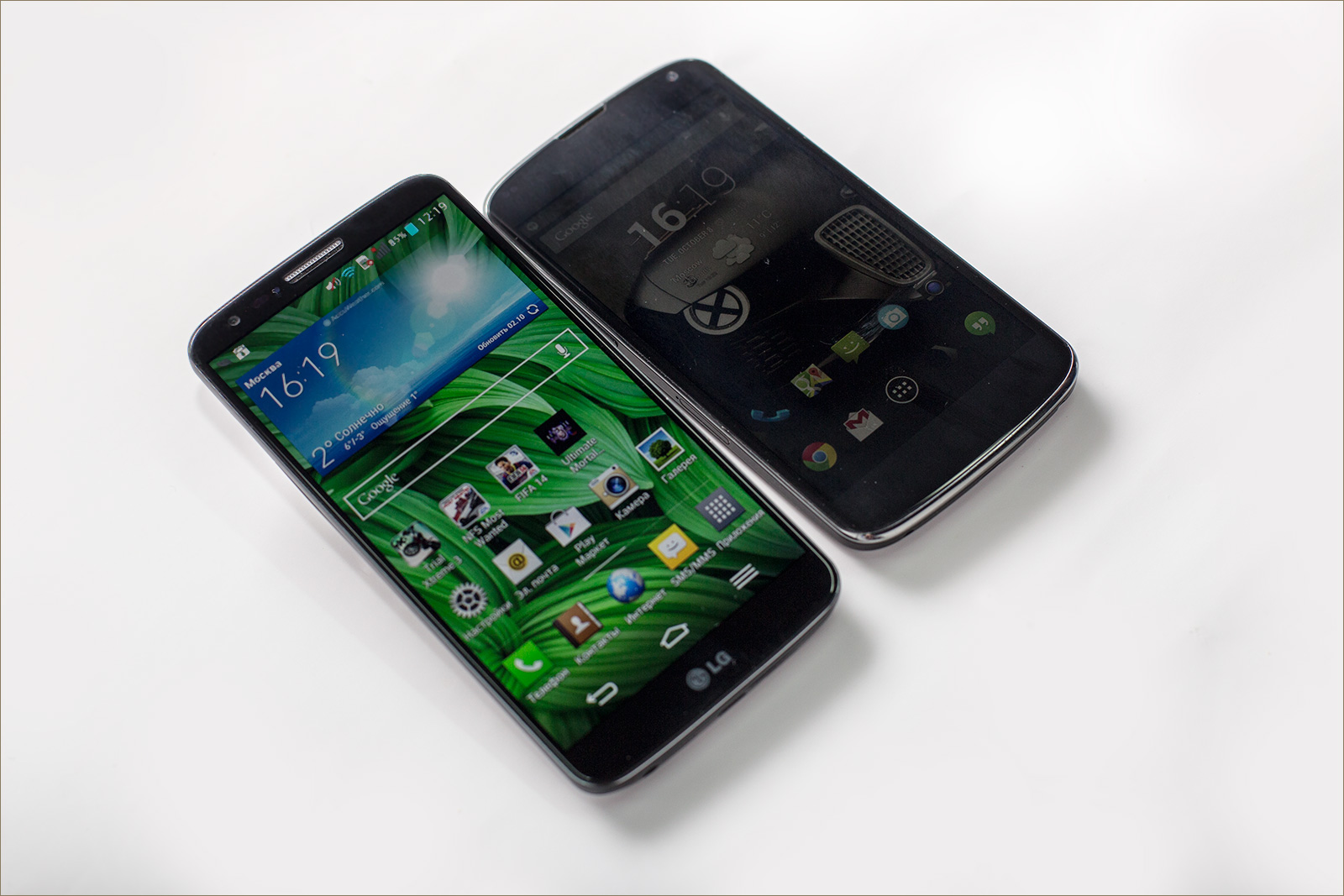
With the camera, everything is ambiguous. In each new press release since the transition to Android 4.0, LG promised to fix the camera. Not that “things are there”, but by the photographic capabilities of the LG Optimus G stuck at the level of the third galaxy as a maximum, despite the fact that the camera module in it is noticeably newer. In the G pro miracle did not happen, but there has been at least some tendency to improvement. And now ... G2, foreign releases, and ... what he sees is shocking. G2 shoots better than S4 (not in all cases, but the level of the photo flagship of the main competitor for the minds of consumers is reached and there is at least parity in the photo capabilities of smartphones).
I don’t give a lot of my frames (taking pictures at the LG office or a refrigerator in a showroom with good lighting is somehow not interesting), but I’m happy to share what I’ve picked on the Internet:

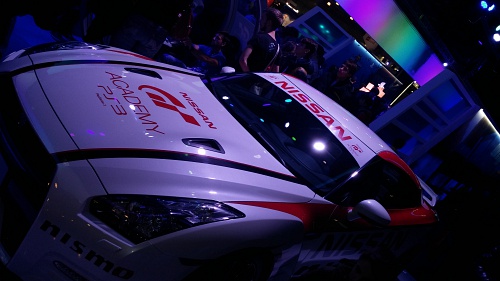
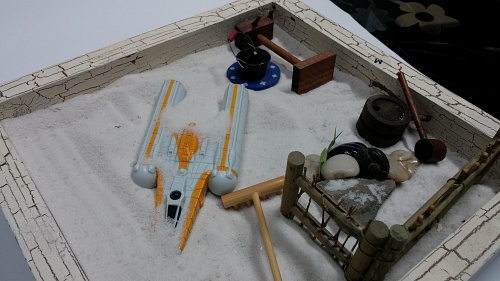

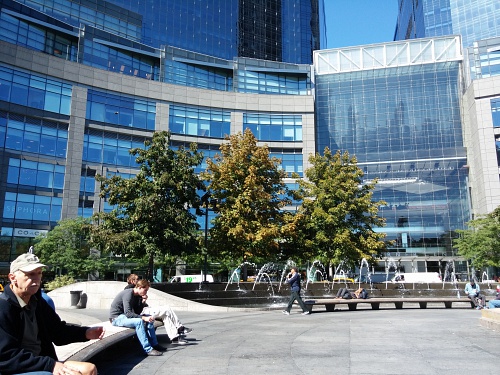

Yes, and a post about the comparison of cameras I recently wrote, you can evaluate the photo capacity in it .
As you can see, everything is worthy. And the merit in this is the corrected software. So the hope for improving the photo capabilities of the previous two devices with the G index is (albeit a ghostly one).
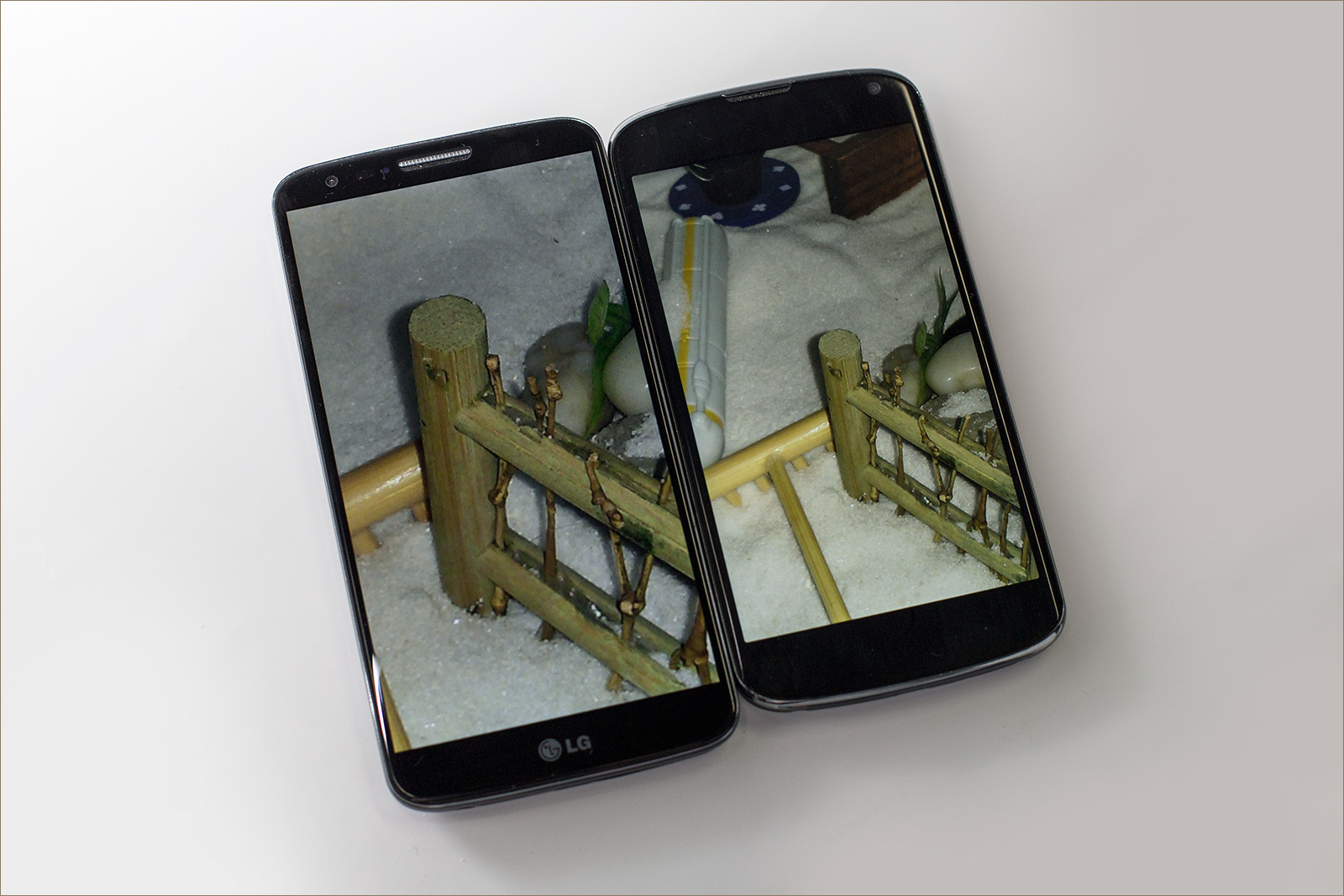
First, the menu itself and the approach to customizing the “environment” has changed. It became really more convenient. No need to go into the thirty-kilometer menu, everything you need is available in just 2-3 tapas.
Secondly, autofocus is no longer a chthonic monster in lethargic hibernation, but a bordry and active participant in the photo-process. Works fast, clings to what should be.
Thirdly, an optical stabilizer appeared in the chamber. Of course, with such a focal length, it will not save from strong shaking, but it is able to improve photo-performance in difficult conditions. And in general, the presence of features is not its absence.
Someone will say that LG in vain changed their “glass” style (which was laid in Nexus 4 and continued in Optimus G), and the G2 is generally similar to the Galaxy S4. In some ways, I agree, in something - no. Glass Optimus G weighs a lot, the thickness of the glass is clearly more plastic, and after all these fractions of a millimeter could get a battery, smartphone stuff, and plastic is not so afraid of falls. In addition, however much the gorilla would not be cool, it still scratches with a bang, my Nexus has already acquired shameful scratches, and I don’t know how and when I put them. He did not fall too much (and certainly did not fall on the street), did not lie in the sand, and in general he was either in his pocket, or in his hands, or on a table on a special rubberized napkin (so as not to leave).
There are only two colors available - brilliant white (glossy lacquer on the case) and carbon black (not less glossy).
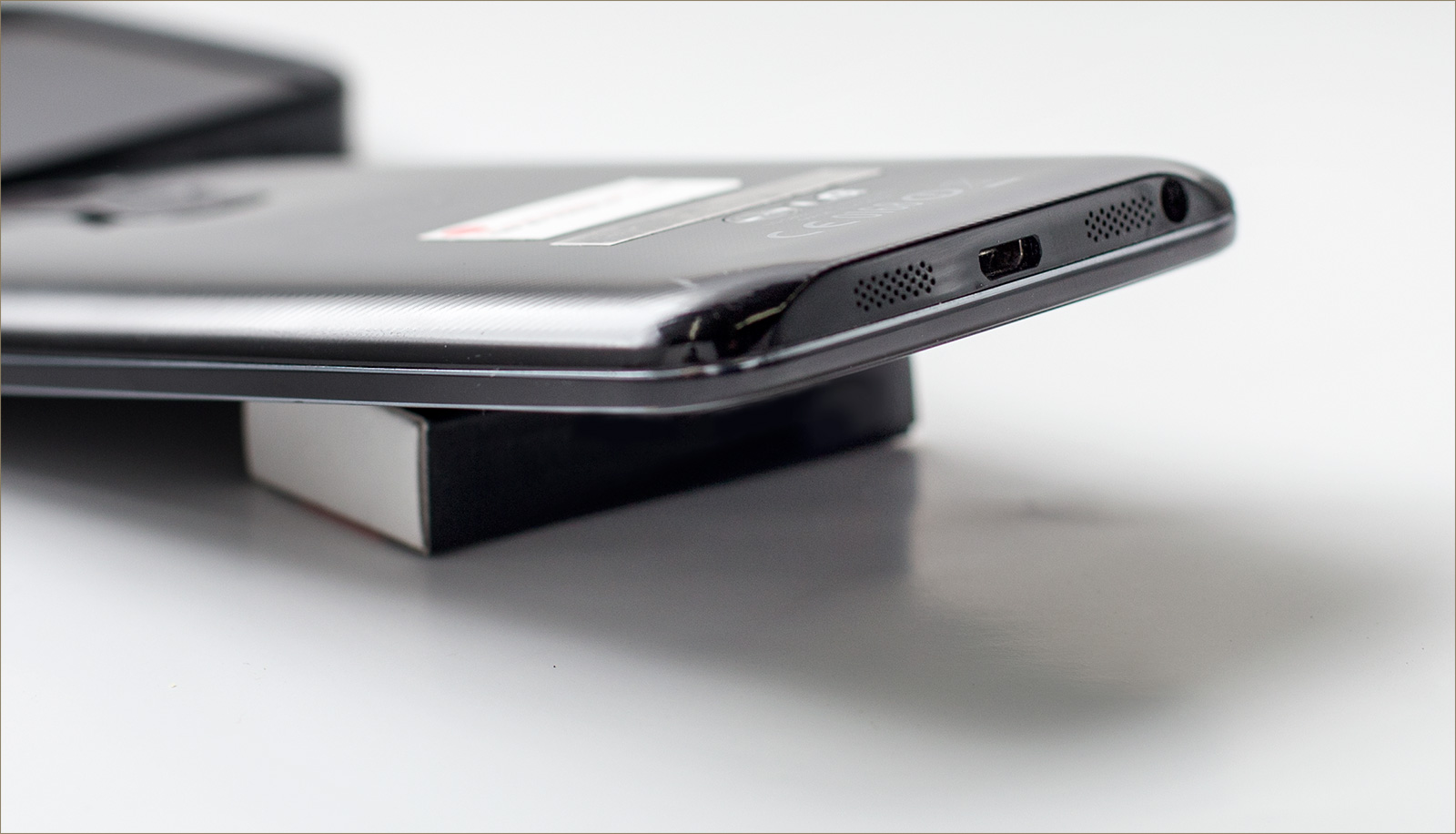
To be honest, I would prefer the cover material in the style of the old and good Galaxy S2 - small ribbing, on which neither fingerprints, nor microscopes are visible, and the material is much more pleasant to the touch than slippery plastic.
The original covers can protect the original cover (which only slightly thickens the device, but gives it a couple of interesting features), but for me, cheholchiki and other means of protecting the appearance are like cellophane on TV remotes.
Actually, here it is just about the cover-book. There are many colors to choose from, the front panel contains a “window” and a magnetic sensor. With such a cover, you will not have to use the lock button at all. It looks very nice, in the closed mode, you can select the type of output information in the “window”, and, without removing the smartphone from the lock and without opening the lid. With a simple swipe left / right and / or up / down, you choose what you need - the clock, the weather or the timer. I think in the future the number of supported utilities for the “window” will only grow.
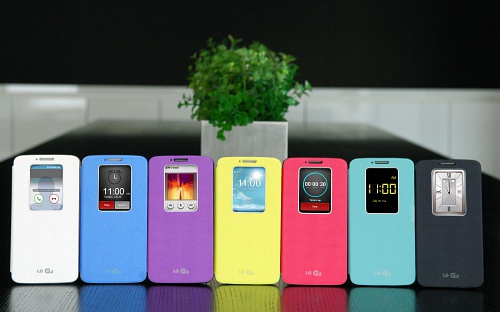
In addition to the unfortunate software of the camera, which finally made happy, the Koreans also improved the Optimus UI shell.
As I have already said, now there is support for On-Screen controls, and the panel itself can be configured as in the elements displayed on it, there and in the color scheme.
In addition, improvements have been made and overall performance. I had previously considered the LG obolku one of the best in terms of the economy of resource use and “unobtrusiveness”, almost all the component parts and add. the applications were simply cut out from the application manager, and the built-in programs for working with files, documents, and notes were very, very good. In general, now the native software is less tupit (although it was not a brake before). which can not but rejoice. It remains to hire a good designer to redraw icons and pictograms, and a couple of translators to translate everything correctly into Russian. And there will be everything in chocolate.
LG again in no hurry to overtake everyone and everything with the release of the flagship, and the result makes me happy. It turned out well-balanced device with a good set of characteristics and a very nice camera, convenient (!) Design, and LG software, as I already said, did not cause aversion to me since the transition of the entire line to the unified Optimus UI.
I hope and wait for the backport improvements in the camera and performance on the rest of the smartphones of the line, the benefit of the constant kicks from the community led to the fact that the mobile unit changed the people responsible for this business. Updates promise to release faster and keep smartphones longer.

general information
The insides of the smartphone are state-of-the-art: a processor based on the 800th QualCom, Adreno 330 video core, all current wireless interfaces, in general - like in the best homes.

')
The Galaxy S4 and the power less, besides the version based on Qualcomm Snapdragon 800 only planned to release, but to the finished copies, like, it never came. The most interesting thing in the new product is definitely not a processor with memory: LG promised a new screen, a new camera and improved software, and it was these questions that interested me first of all. Responsible for autonomy battery volume in a decent 3000 mAh.

Built-in memory - 32 GB, when asked about versions with a large amount of internal memory, I was answered negatively. Oh, I almost forgot: the smartphone uses a new feature that came from the world of large PCs: dedicated memory for graphics, it works, however, a little differently. GPU Adreno 330 can address not only the “common” RAM, but also has its own fast and energy-efficient “buffer”, thereby reducing power consumption when displaying “static” information - until the frame changes - the smartphone will not recalculate it, but will stupidly from the video clip. LG tests have shown that there is an increase in autonomy and it is palpable. In practice, comparing the device with the included feature and without it will not work at all, so it remains to take their word for it.
Screen and controls
In G2, the matrix is set with a huge diagonal: 5 point and 2 tenths of an inch. But a couple of years ago, everyone laughed at devices with 4.7-inch screens, they say, you can dig. The screen is good for two reasons: first, FullHD reigns supreme on these five inches with a penny. And secondly ... LG engineers managed to shove this gigantic screen into a case that does NOT exceed the usual 4.7 - 5-inch devices with their case sizes. Magically. Or rather, there is no magic here, the buttons under the screen and the buttons on the sides of the smartphone are sacrificed, but with all these sacrifices, the smartphone has only become better.

On-screen management has long been honed by Google on its flagships. Need buttons - here they are, not needed - hide. In this regard, LG went a little further, allowing you to choose the color of the status bar, and slightly vary the controls on it, but more on that later.
With the side edges of the smartphone is a little more complicated. The control buttons are transferred to the rear panel, and I would call this solution ingenious. Locking and volume control are now equally convenient and accessible to both right-handers and left-handers. You take the smartphone, and the index finger rests on the controls.

It is very difficult to drop the device with this grip, even if you get your phone out of your pocket on the go and try to unlock it at the same time. There is no need to intercept for changing the volume, locking the screen or any other actions with hardware keys. Okay, back to the screen.

Display - FullHD, IPS matrix with the corresponding viewing angles and color reproduction. Adobe RGB should not be expected, of course, but there is no need for it, and almost full sRGB coverage is stated out of the box. Image density - 424 PPI, about the stairs or soap on the screen, you can forget. Everything is crystal clear and clean.

Camera
With the camera, everything is ambiguous. In each new press release since the transition to Android 4.0, LG promised to fix the camera. Not that “things are there”, but by the photographic capabilities of the LG Optimus G stuck at the level of the third galaxy as a maximum, despite the fact that the camera module in it is noticeably newer. In the G pro miracle did not happen, but there has been at least some tendency to improvement. And now ... G2, foreign releases, and ... what he sees is shocking. G2 shoots better than S4 (not in all cases, but the level of the photo flagship of the main competitor for the minds of consumers is reached and there is at least parity in the photo capabilities of smartphones).
I don’t give a lot of my frames (taking pictures at the LG office or a refrigerator in a showroom with good lighting is somehow not interesting), but I’m happy to share what I’ve picked on the Internet:






Yes, and a post about the comparison of cameras I recently wrote, you can evaluate the photo capacity in it .
As you can see, everything is worthy. And the merit in this is the corrected software. So the hope for improving the photo capabilities of the previous two devices with the G index is (albeit a ghostly one).

First, the menu itself and the approach to customizing the “environment” has changed. It became really more convenient. No need to go into the thirty-kilometer menu, everything you need is available in just 2-3 tapas.
Secondly, autofocus is no longer a chthonic monster in lethargic hibernation, but a bordry and active participant in the photo-process. Works fast, clings to what should be.
Thirdly, an optical stabilizer appeared in the chamber. Of course, with such a focal length, it will not save from strong shaking, but it is able to improve photo-performance in difficult conditions. And in general, the presence of features is not its absence.
Design and usability
Someone will say that LG in vain changed their “glass” style (which was laid in Nexus 4 and continued in Optimus G), and the G2 is generally similar to the Galaxy S4. In some ways, I agree, in something - no. Glass Optimus G weighs a lot, the thickness of the glass is clearly more plastic, and after all these fractions of a millimeter could get a battery, smartphone stuff, and plastic is not so afraid of falls. In addition, however much the gorilla would not be cool, it still scratches with a bang, my Nexus has already acquired shameful scratches, and I don’t know how and when I put them. He did not fall too much (and certainly did not fall on the street), did not lie in the sand, and in general he was either in his pocket, or in his hands, or on a table on a special rubberized napkin (so as not to leave).
There are only two colors available - brilliant white (glossy lacquer on the case) and carbon black (not less glossy).

To be honest, I would prefer the cover material in the style of the old and good Galaxy S2 - small ribbing, on which neither fingerprints, nor microscopes are visible, and the material is much more pleasant to the touch than slippery plastic.
The original covers can protect the original cover (which only slightly thickens the device, but gives it a couple of interesting features), but for me, cheholchiki and other means of protecting the appearance are like cellophane on TV remotes.
Accessories
Actually, here it is just about the cover-book. There are many colors to choose from, the front panel contains a “window” and a magnetic sensor. With such a cover, you will not have to use the lock button at all. It looks very nice, in the closed mode, you can select the type of output information in the “window”, and, without removing the smartphone from the lock and without opening the lid. With a simple swipe left / right and / or up / down, you choose what you need - the clock, the weather or the timer. I think in the future the number of supported utilities for the “window” will only grow.

Soft
In addition to the unfortunate software of the camera, which finally made happy, the Koreans also improved the Optimus UI shell.
As I have already said, now there is support for On-Screen controls, and the panel itself can be configured as in the elements displayed on it, there and in the color scheme.
In addition, improvements have been made and overall performance. I had previously considered the LG obolku one of the best in terms of the economy of resource use and “unobtrusiveness”, almost all the component parts and add. the applications were simply cut out from the application manager, and the built-in programs for working with files, documents, and notes were very, very good. In general, now the native software is less tupit (although it was not a brake before). which can not but rejoice. It remains to hire a good designer to redraw icons and pictograms, and a couple of translators to translate everything correctly into Russian. And there will be everything in chocolate.
Summary
LG again in no hurry to overtake everyone and everything with the release of the flagship, and the result makes me happy. It turned out well-balanced device with a good set of characteristics and a very nice camera, convenient (!) Design, and LG software, as I already said, did not cause aversion to me since the transition of the entire line to the unified Optimus UI.
I hope and wait for the backport improvements in the camera and performance on the rest of the smartphones of the line, the benefit of the constant kicks from the community led to the fact that the mobile unit changed the people responsible for this business. Updates promise to release faster and keep smartphones longer.
Source: https://habr.com/ru/post/203046/
All Articles